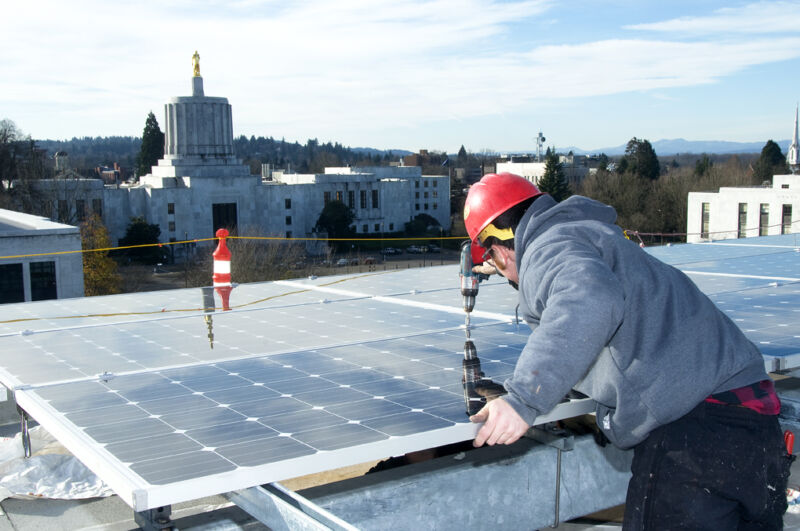
Enlarge (credit: Oregon DOT / Flickr)
Solar energy is really starting to get its wings, with utility and residential installation growing at a rapid clip. While these systems generally operate for two or three decades, there inevitably comes a time to take photovoltaic panels down for replacement. What happens then has a lot to say about solar's long-term bottom line.
The opportunity is there to turn old PV panels into new ones, reducing the technology's environmental footprint. But in a paper published in Nature Sustainability, a group led by Garvin Heath at the US National Renewable Energy Laboratory argues we have a long way to go—though they think they see the way.
A matter of purity
Currently, they say, standard practice is to hand solar panels to existing glass- or metal-recycling facilities—at best, batches of panels may be at least be run through on their own. That does little more than recover the aluminum in the frame, the copper in the wiring, and the glass sheet atop the photovoltaic cells. Laws mandating panel recycling haven't advanced beyond the drawing board in many places yet, with the European Union and the state of Washington in the US as exceptions. The EU requires at least 75 percent of material to be recovered, and these processes can hit that mark.
No comments:
Post a Comment